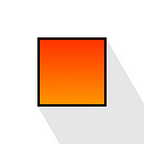How to Design Obelisks
What are the dimensional relationships in a classical obelisk? A 19th century design guideline is presented, along with a new one based on a simple arithmetic series of dimensions.
On a London spring evening in 1859, sculptor John Bell addressed the audience of the The Royal Society for the Encouragement of Arts, Manufactures and Commerce [1].
“My attention was called to the subject of obelisks some years ago, by my having selected this feature as the principal one in a design I made, at that time wholly privately for myself, for a memorial of the Great Exhibition of 1851. In consequence of this in looking at two or three other obelisks, especially those models of Egyptian obelisks presented to the British Museum… it appeared to me that there was an apparent weakness and insufficiency in their form.”
“I determined to put in practice an idea which had been floating in my mind for some time; that was to add entasis to the sides, analogous to what the Greeks did to their columns… If, then, the Greeks had adopted the obelisk, I suggested, would they have left it as they received it from the Egyptians ? I fancy not.”
“In my first little model I had adjusted its proportions and lines solely by my eye, and executed them actually by what in homely phrase is called the ‘rule of thumb’… I thus for the first time began to measure my little model to find out what definite proportions it…
